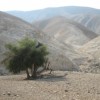
The Israel-Palestine conflict has emerged from history as a particularly brutal, ongoing conflict in the Middle East, driven by two main religious and ethnic forces: the Israeli Jews and the Palestinian Muslims. The history of this conflict is bitter and difficult to understand, but what is clear is the amount of devastation and death that has ravaged this region and the two groups of people that lay claim to it. How many people have been killed in the Israel-Palestine conflict? How many could die and how much longer could this conflict go on? Why can’t either side come to a resolution? Some of the questions regarding this conflict are easily answered with numbers and facts, but others are complex and lack any real answers. This article seeks to outline the questions that can be answered, with the hope that others can be begin to understand the more difficult questions that surround the Israel-Palestine Conflict.
History of the Israel-Palestine Conflict
In the early 1930’s, Palestine was predominantly Muslim and ruled by the British Empire. Palestinian Arabs and Jews lived relatively peacefully together. In the late 1800’s, however, a source of tension had begun to grow as a Jewish Zionist movement began. This movement was intent on reclaiming Palestine, which the Jews called Israel. Jews had once been the religious majority in Israel, before the Roman empire forced them out and killed many of them about two thousand years ago. Those heading the Zionist movement believed that Jews should reclaim Israel, but their growing numbers were threatening Palestinian Muslims, who were worried they would become the minority.
The Zionist movement and growing number of Palestinian Jews became very influential in 1930 when the Palestinian Muslims rose up in the Great Arab Revolt against British rule. With the help of the Jews, the British empire quelled the rebellion, but remained on tense guard in Palestine for the next eighteen years. The Jews and the Arabs began to form armies and waited for the day when the British would leave. In 1947, the UN attempted to divide the land between the Arabs and Jews, but the plan was met with hostility. In 1948, the British finally withdrew, and the Arabs lost the ensuing war. An estimated 711,000 Palestinian’s became refugees and fled, while the Jews took control of Palestine. They renamed the land Israel and heralded their return to their ancient homeland.
Today, millions of displaced Palestinians live in the Gaza Strip, the West Bank and the lands surrounding Israel. Conflict is bitter between the two groups of people, as they fight for control of Jerusalem, which has deep religious meaning in the Jewish and Islamic tradition. Also among the sources of conflict is control of land, water and natural resources. Arguably the root of the conflict is the desire for recognition of both groups and a homeland for each.
Israel-Palestine Violence
Much of the violence between Israel-Palestine is unbalanced. The Palestinians do not have a very clearly defined army like the Israelis, so much of their fighting is done by civilians, which may explain why Palestinian civilian casualties are so much higher than Israelis. Suicide attacks, mines, violent demonstrations, shelling and artillery are all major contributors to the amount of life lost in recent years. Many Palestinian children are used in attacks at Israeli check points and road blocks and therefore have a higher loss of life than Israeli children in the violence of the conflict. According to the Israel Defense Force, between 2000 and 2003 alone, there were 29 suicide attacks perpetrated by children under the age of 18.
The number of mortars, explosives and weapons used in the entirety of the conflict is not documented.
Israel Palestine Conflict Today
After the failure of attempted peace talks like the Oslo Accords (2000) and the Taba Summit (2001), it was difficult for many Israelis and Palestinians to see an end to the conflict. Most recently in September 2011, the Palestinian Authority made a movement in the UN asking for recognition of Palestine statehood. It was called a “Palestine Spring” in the wake of various uprising in Arab countries.
Today, much of the fighting goes on between the Israeli army and the Palestinian extremist groups Hamas and the Islamic Jihad movement. In December of 2008, the Israeli army began Operation Cast Lead against the two groups in the Gaza Strip. Many civilians died, and the extremists retaliated with air strikes and fire mortars, killing several Israeli armed forces.
It is believed that most Palestinians and Israelis today favor a two-state solution with independent Jewish and Muslim states, but the groups face difficulties in negotiating lands and borders. The future of the conflict is uncertain.
, Israel-Palestine Conflict: Death Toll www.ozeldersin.com bitirme tezi,ödev,proje dönem ödevi
